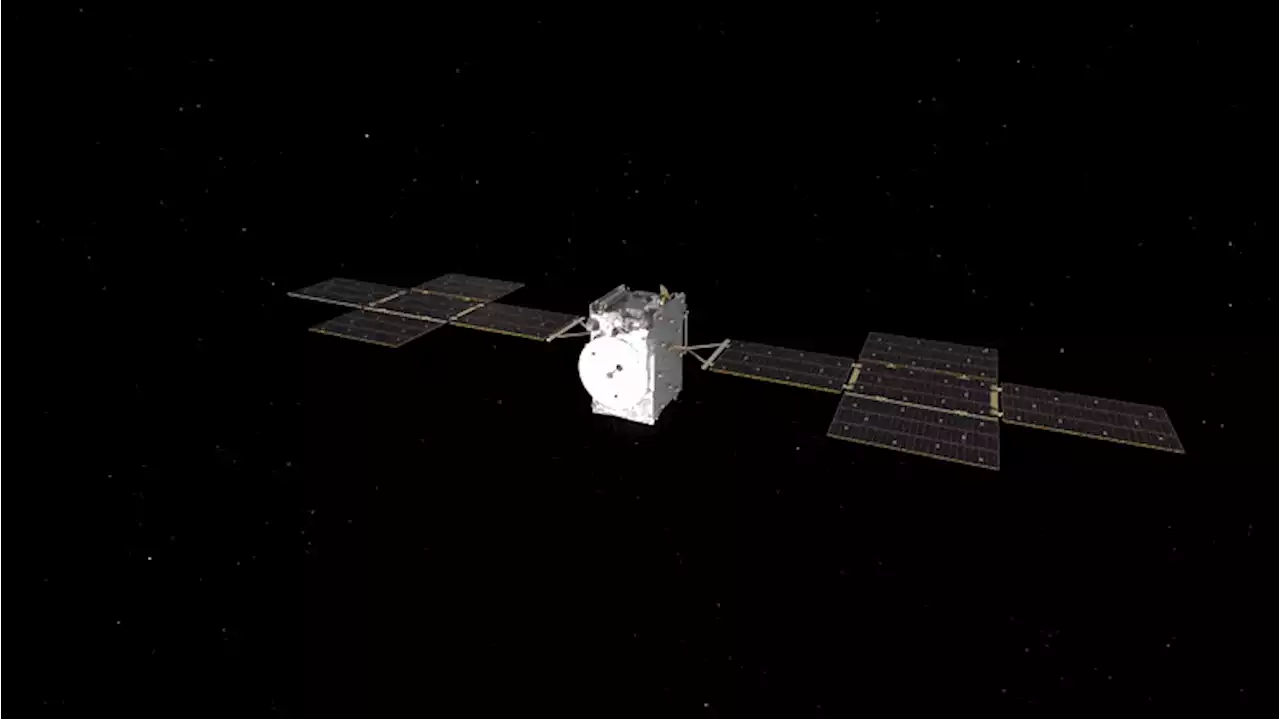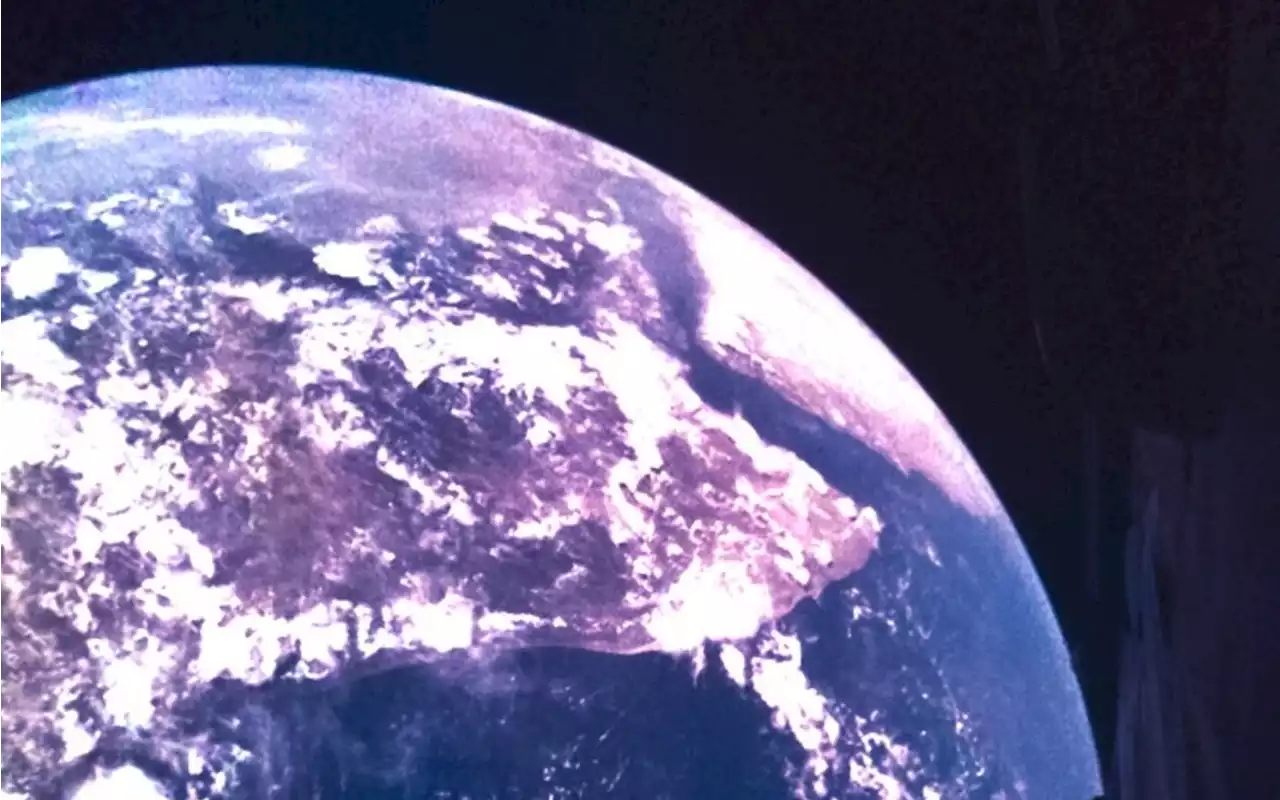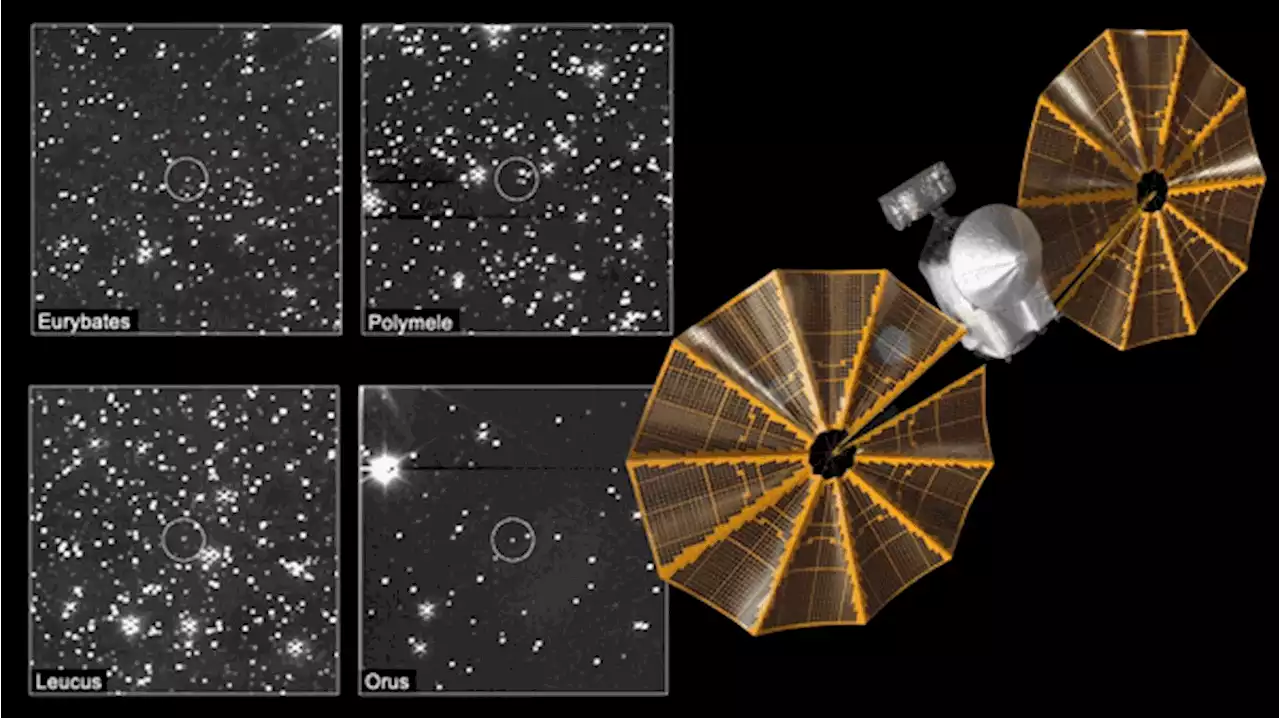The asteroid-hopping spacecraft spotted four of the Jupiter Trojan asteroids that it will visit from 2027 onwards.
After this, LUCY will return to Earth in around 2030 for a third gravity boost before heading off to the pair of giant asteroids known as Patroclus-Menoetius, which are each more than 60 miles wide. LUCY will reach this double rock at around 2033.
A high resolution topographic map of the Yucatan Peninsula created with data collected in the Shuttle Radar Topography Mission and released on March 7, 2003 in Washington, D.C. In the upper left portion of the peninsula, a faint arc of dark green is visible indicating the remnants of the Chicxulub impact crater.
United States Latest News, United States Headlines
Similar News:You can also read news stories similar to this one that we have collected from other news sources.
 New Understandings of Witch Trials, Synthetic Morphology and the Moons of JupiterPhysicists attempt to weigh a vacuum and resolve the “worst theoretical prediction in the history of physics”
New Understandings of Witch Trials, Synthetic Morphology and the Moons of JupiterPhysicists attempt to weigh a vacuum and resolve the “worst theoretical prediction in the history of physics”
Read more »
 Sloth steals the show during European rocket launch to JupiterMany viewers of the launch from French Guinea online found themselves distracted by something much more terrestrial than the sights soon to be seen via JUICE.
Sloth steals the show during European rocket launch to JupiterMany viewers of the launch from French Guinea online found themselves distracted by something much more terrestrial than the sights soon to be seen via JUICE.
Read more »
 Sloth steals the show during European rocket launch to JupiterMany viewers of the launch online found themselves distracted by a sloth who was caught staring into the European Space Agency cameras capturing the event.
Sloth steals the show during European rocket launch to JupiterMany viewers of the launch online found themselves distracted by a sloth who was caught staring into the European Space Agency cameras capturing the event.
Read more »
 ESA’s Jupiter Icy Moons Explorer (Juice) Gets WingsAfter a successful launch on April 14 on an Ariane 5 rocket from Europe’s Spaceport in Kourou, the European Space Agency (ESA) Jupiter Icy Moons Explorer (Juice) captured this pair of images captures the rotation of the Jupiter Icy Moons Explorer’s solar arrays during their deployment The images
ESA’s Jupiter Icy Moons Explorer (Juice) Gets WingsAfter a successful launch on April 14 on an Ariane 5 rocket from Europe’s Spaceport in Kourou, the European Space Agency (ESA) Jupiter Icy Moons Explorer (Juice) captured this pair of images captures the rotation of the Jupiter Icy Moons Explorer’s solar arrays during their deployment The images
Read more »
 Juice Looks Back at Earth During Its Space Odyssey to Jupiter's MoonsThe views of Earth captured by the European Space Agency's Juice probe as it headed out toward Jupiter's moons are just the beginning.
Juice Looks Back at Earth During Its Space Odyssey to Jupiter's MoonsThe views of Earth captured by the European Space Agency's Juice probe as it headed out toward Jupiter's moons are just the beginning.
Read more »
 Jupiter-like world breaks record for heaviest element on an exoplanetThe element samarium has been spotted in the atmosphere of a planet called MASCARA-4b, breaking the record for heaviest element ever detected in a world beyond our solar system
Jupiter-like world breaks record for heaviest element on an exoplanetThe element samarium has been spotted in the atmosphere of a planet called MASCARA-4b, breaking the record for heaviest element ever detected in a world beyond our solar system
Read more »
